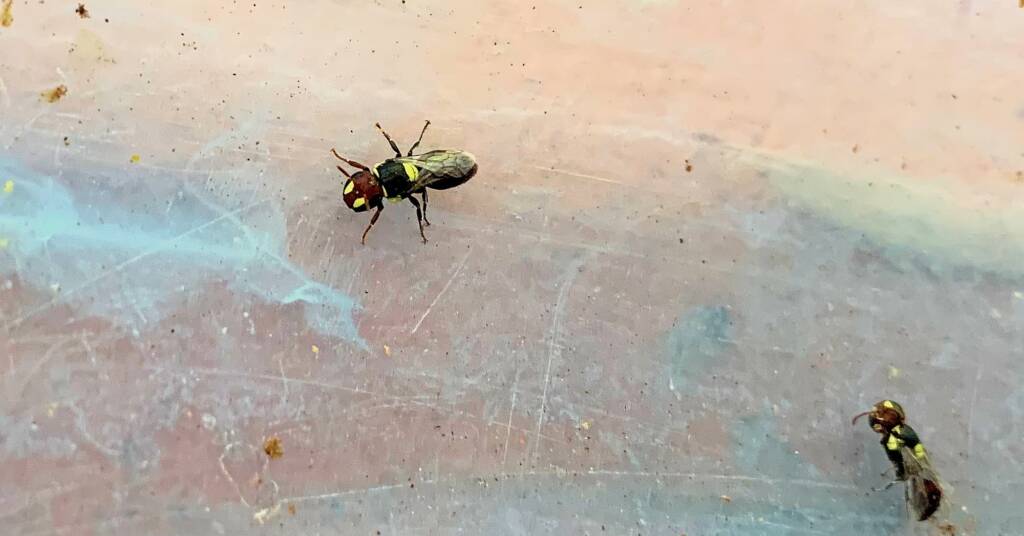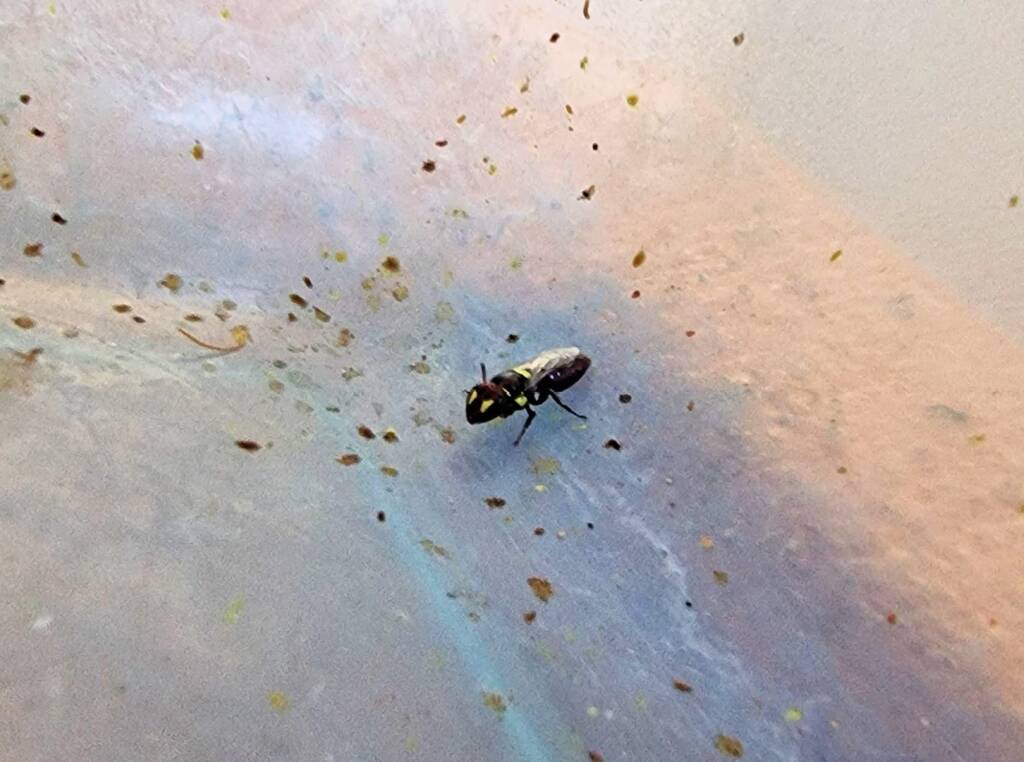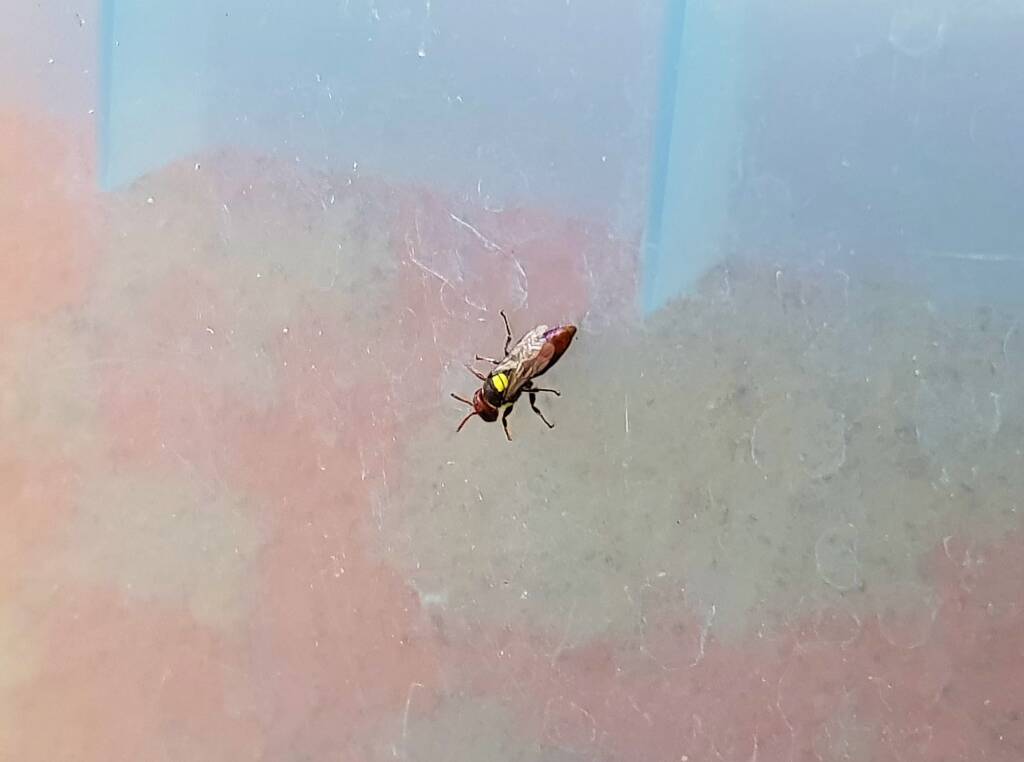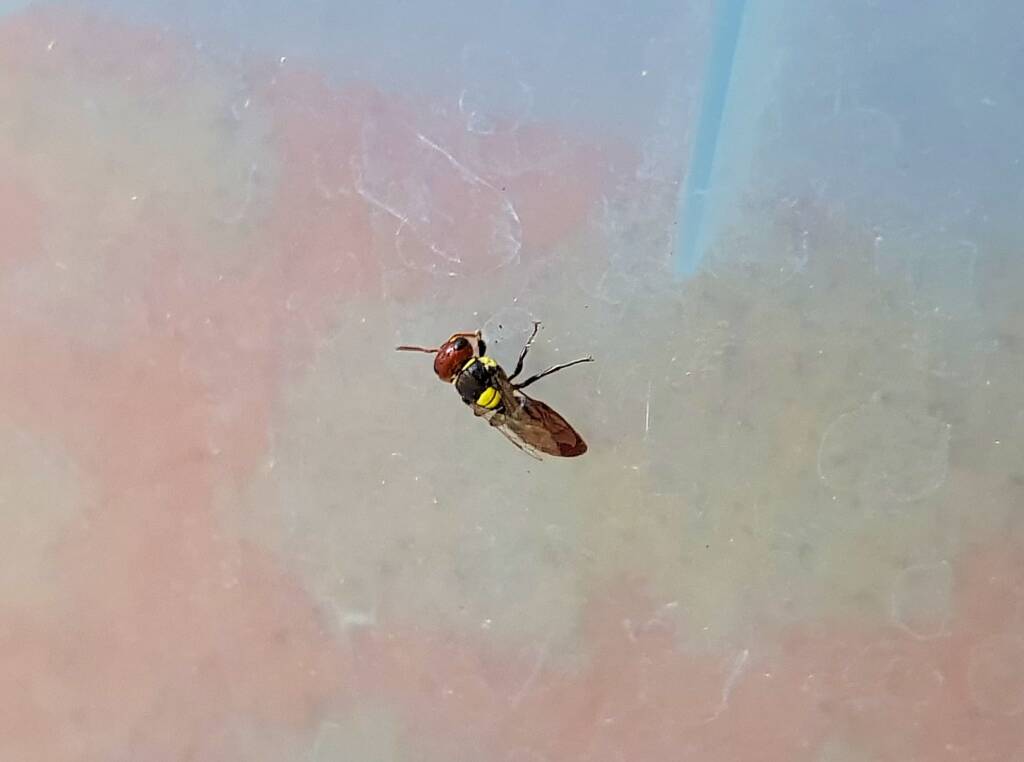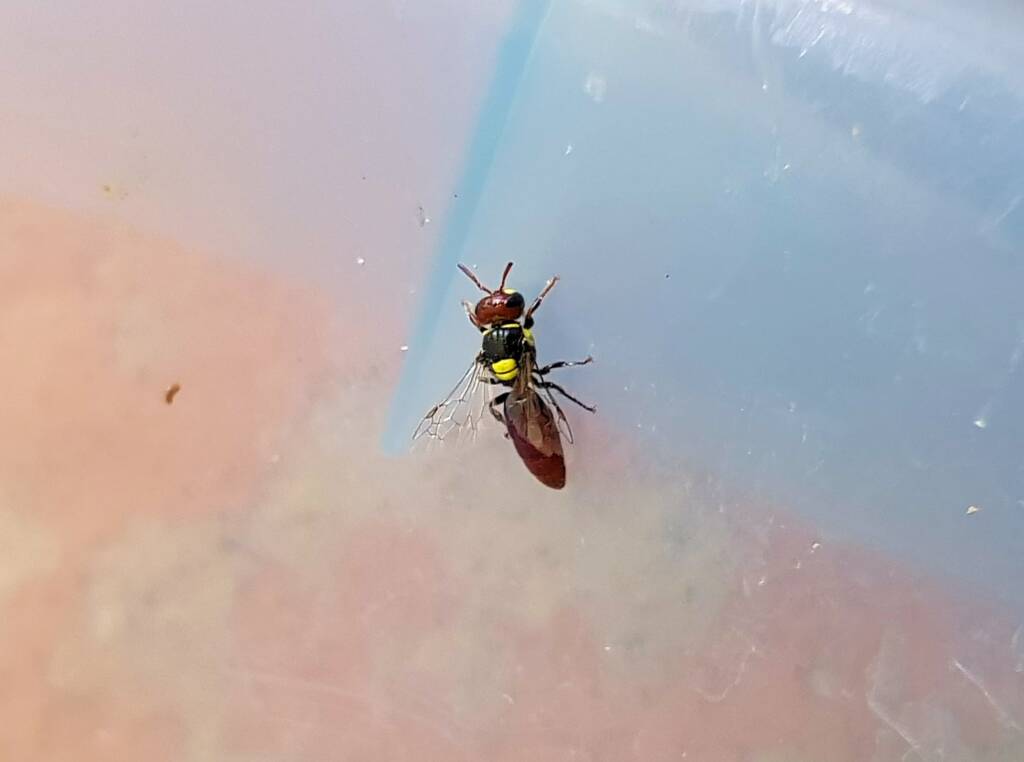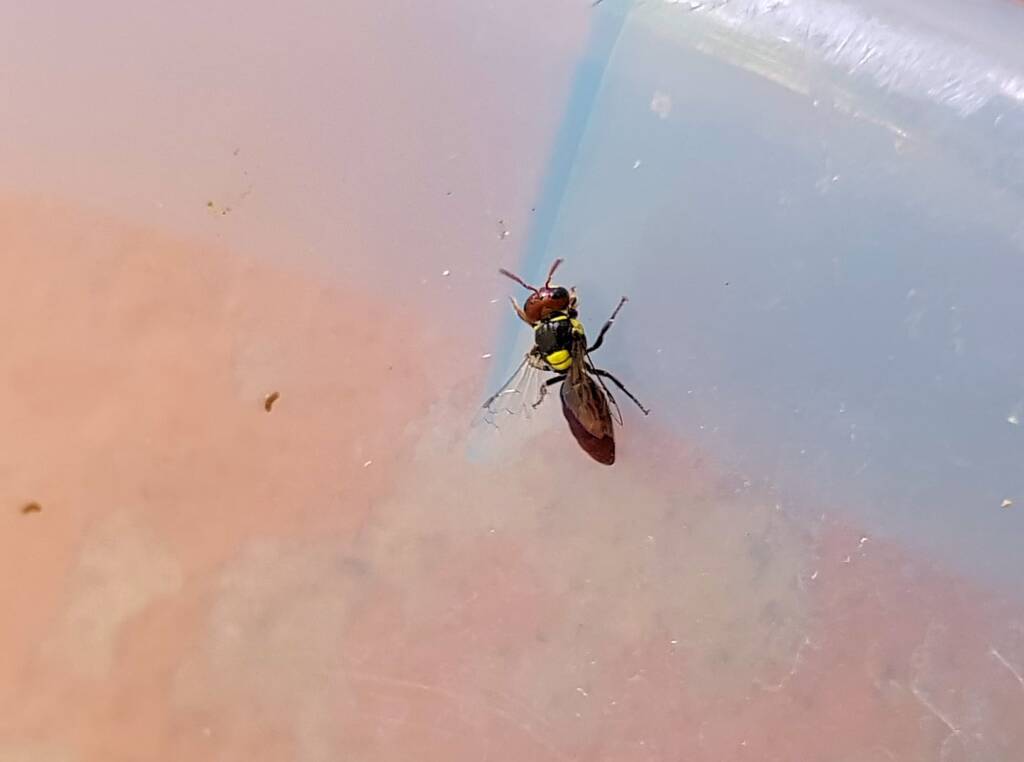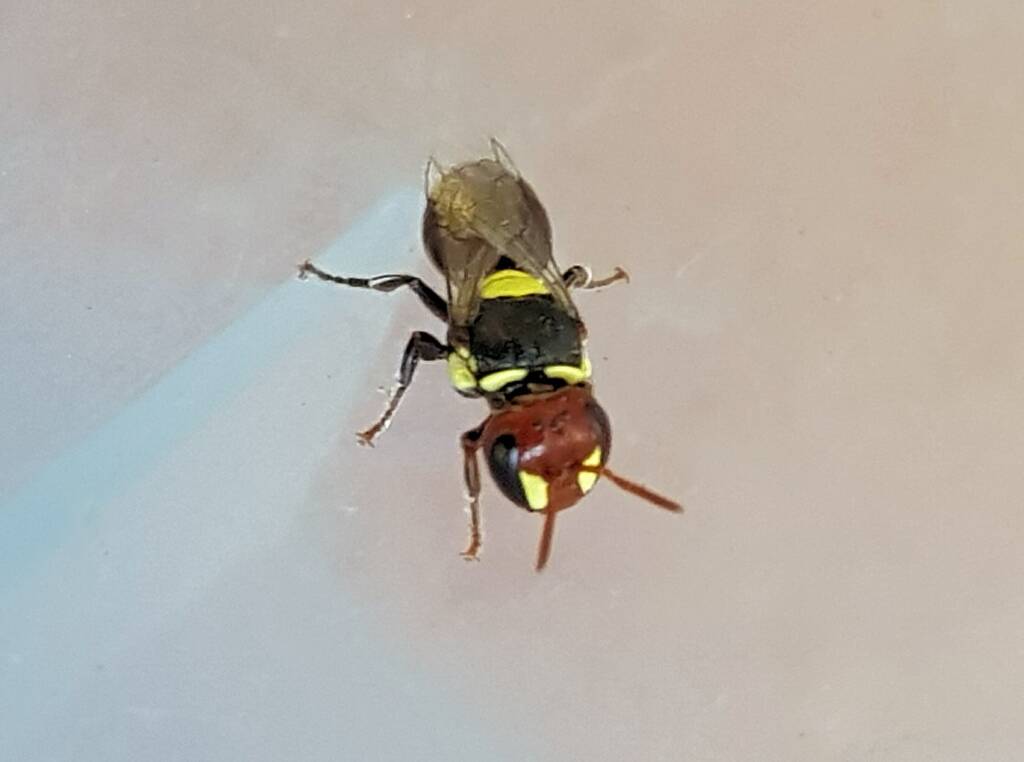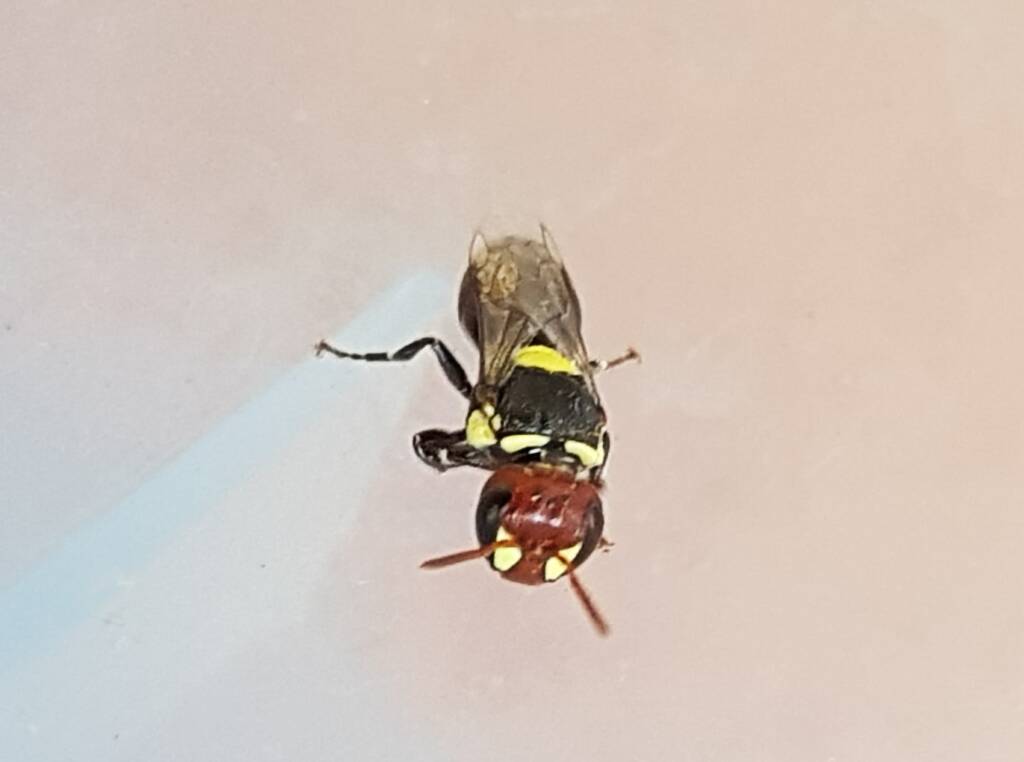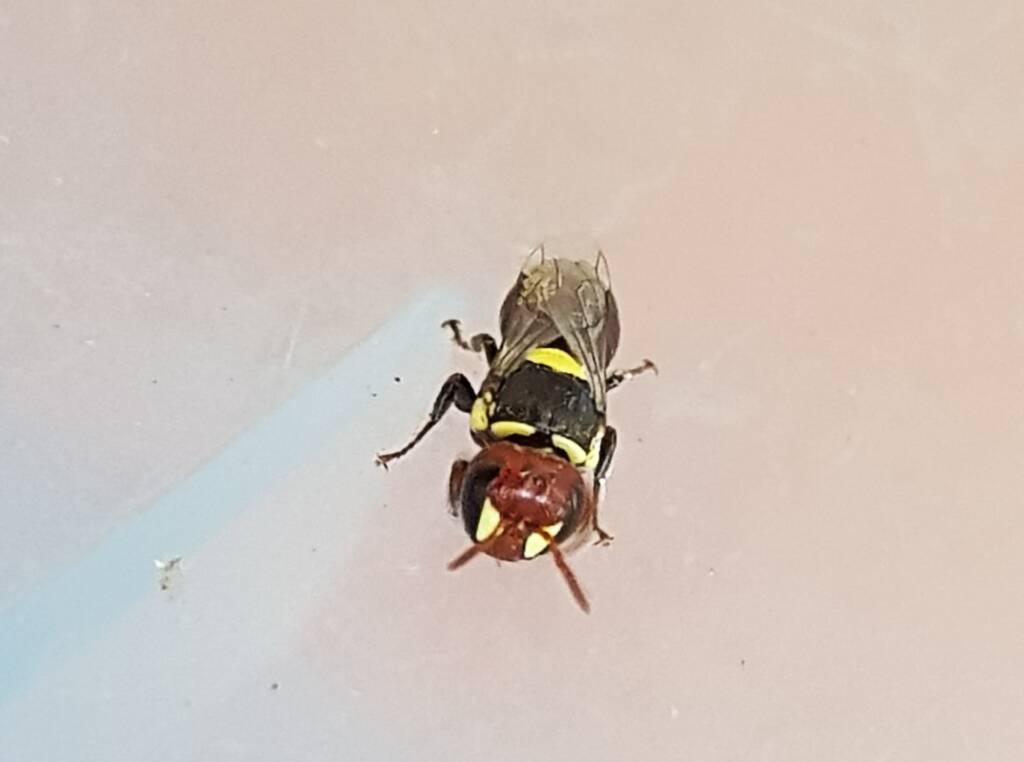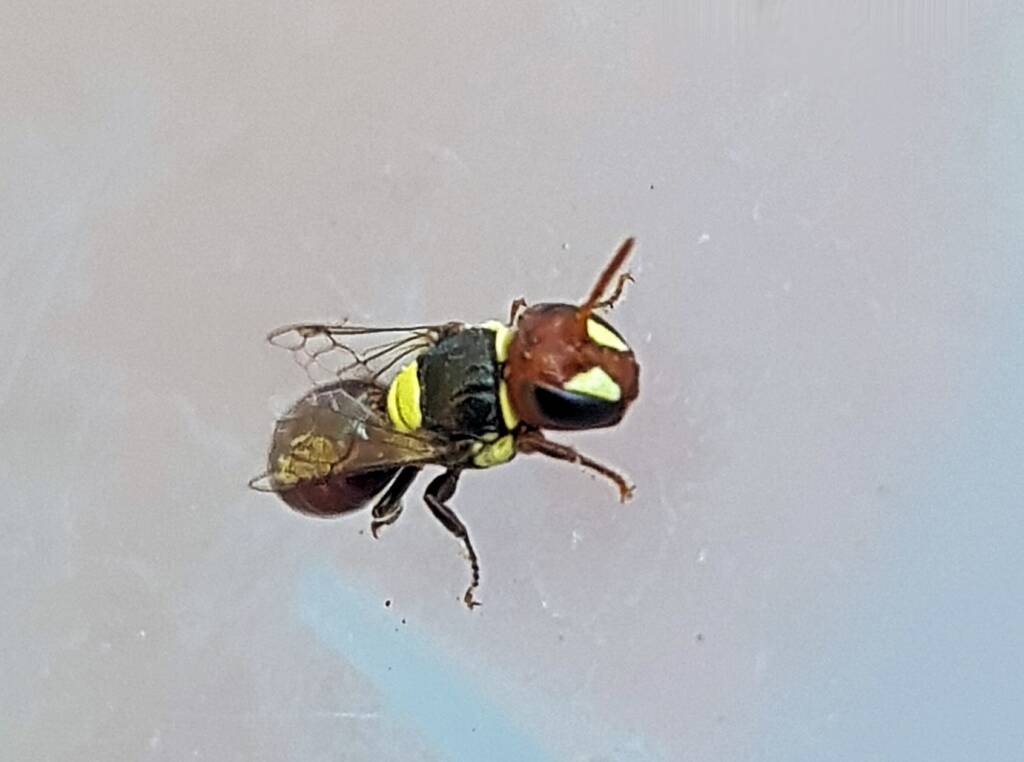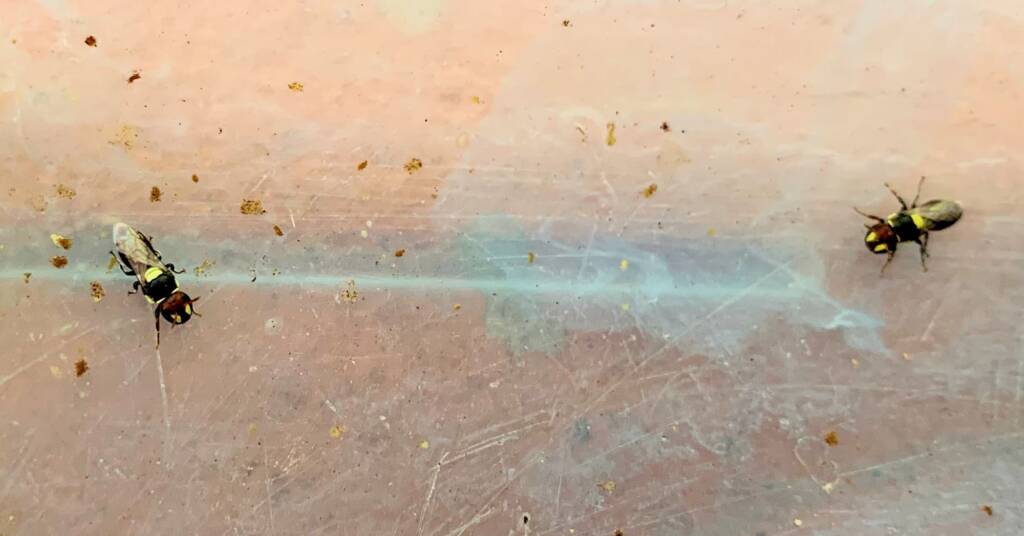Hylaeus spp – Masked BeeHylaeus (Prosopisteron) Hylaeus albonitens Hylaeus alcyoneus Hylaeus constrictiformis Hylaeus douglasi Hylaeus elegans Hylaeus euxanthus Hylaeus maiellus Hylaeus nubilosus Hylaeus proximus Hylaeus ruficeps Hylaeus theodorei Hylaeus violaceus Hylaeus vittatifrons
The genus Hylaeus is a large diverse cosmopolitan group within the bee family Colletidae. The genus is also commonly known as the “yellow-faced bees”, although not all have yellow faces, some genus have white markings on their face.
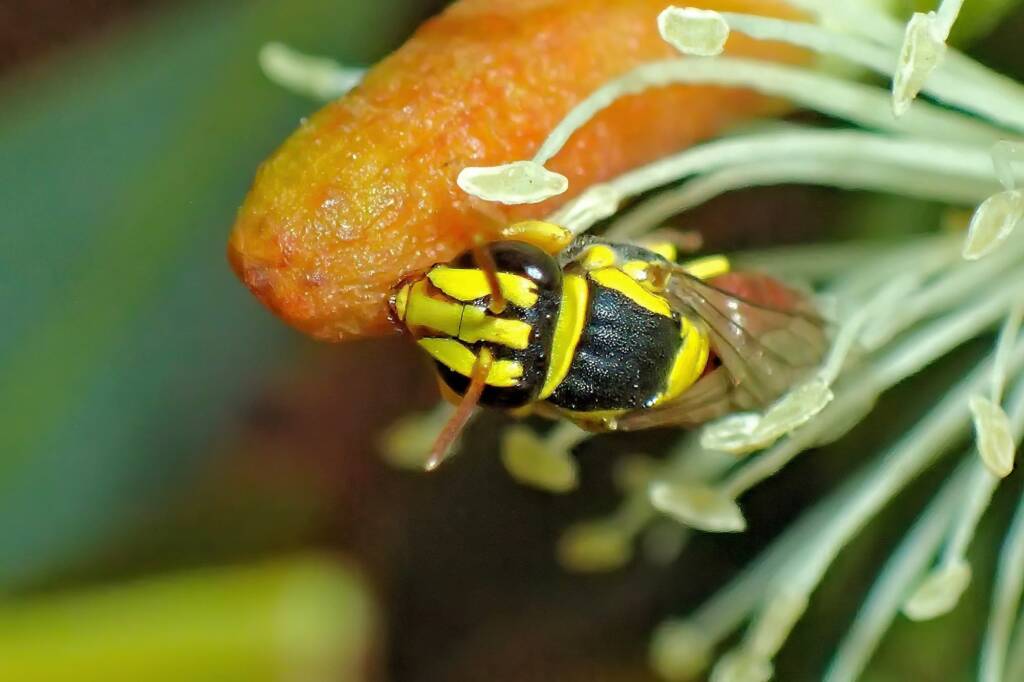
With the common name of Masked Bee (Hylaeus sp), they get their name from the distinctive yellow or white markings on their face. Other addition to the “masked bees” name may define other features, such as the Red-headed Masked Bee (Hylaeus ruficeps).
Masked bees are found throughout Australia, with different species found in different densities subject to availability of nectar and pollen and nesting spots.
The Hylaeus genus of bees occur on all continents except for Antarctica.
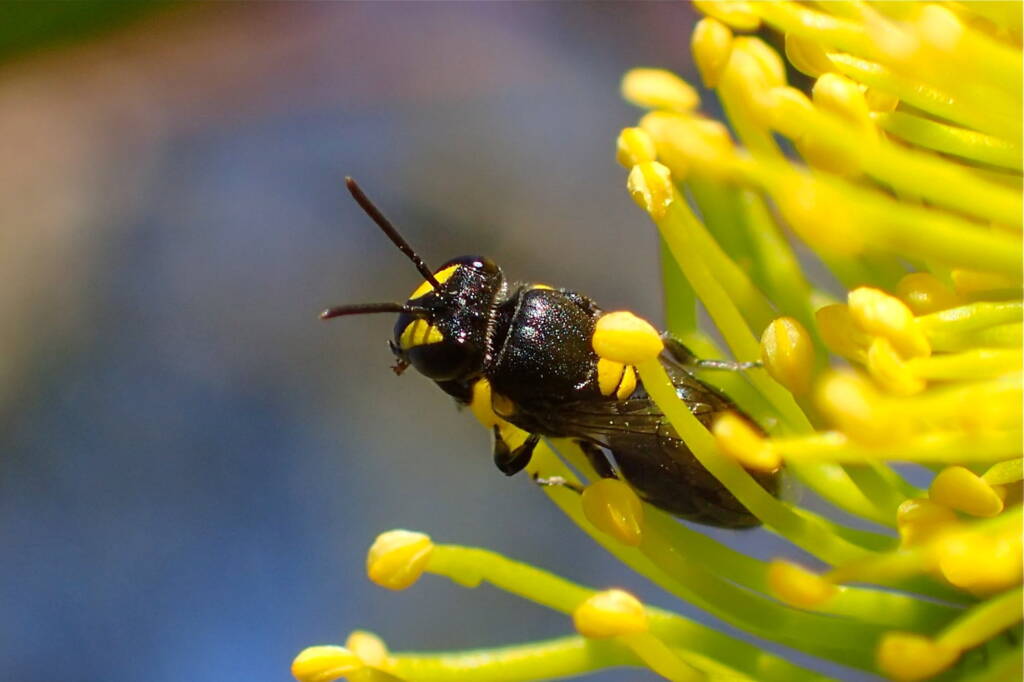
Hylaeus originated in Australia about 30 Mya (million years ago), together with Euryglossinae are two of the most abundant groups of bees in Australia. As a whole, they are relatively small in size, with some suggestions in both these subfamilies, that this has come about with the loss of pollen-collecting scopae. Research has suggested the hylaeines and euryglossines have adapted to swallowing both pollen and nectar, that can be regurgitated back at the nests, negating the need for pollen-collecting scopae.
The scopae is a region of dense branched hairs used to harvest pollen, found on the hind legs of most bees, abdomen (Megachilidae), or sides of propodeum (Andrena). The propodeum or propodium is the first abdominal segment in Apocrita Hymenoptera (bees, wasps and ants). It is fused with the thorax to form the mesosoma.4, 5
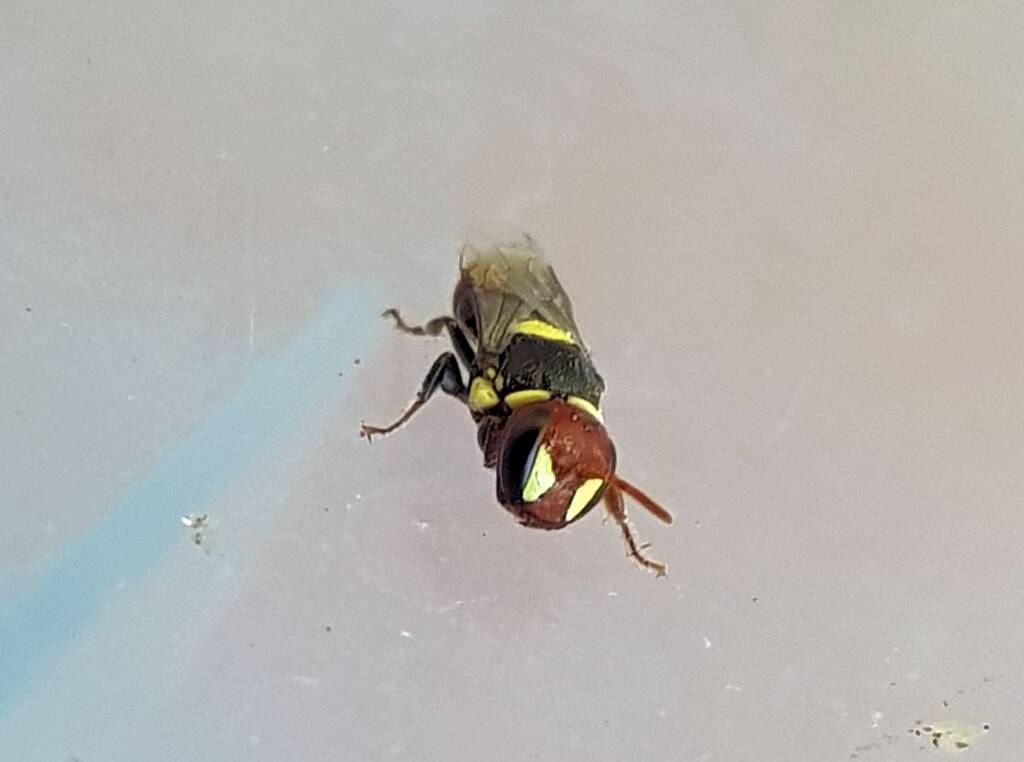
The pictured Hylaeus ruficeps species is very small, no more then 6 mm in overall length. The abdomen is a dark red-brown with similar colouration across the head. The thorax is black with yellow patches. It is thought to be Hylaeus ruficeps or Hylaeus ruficeps ruficeps.
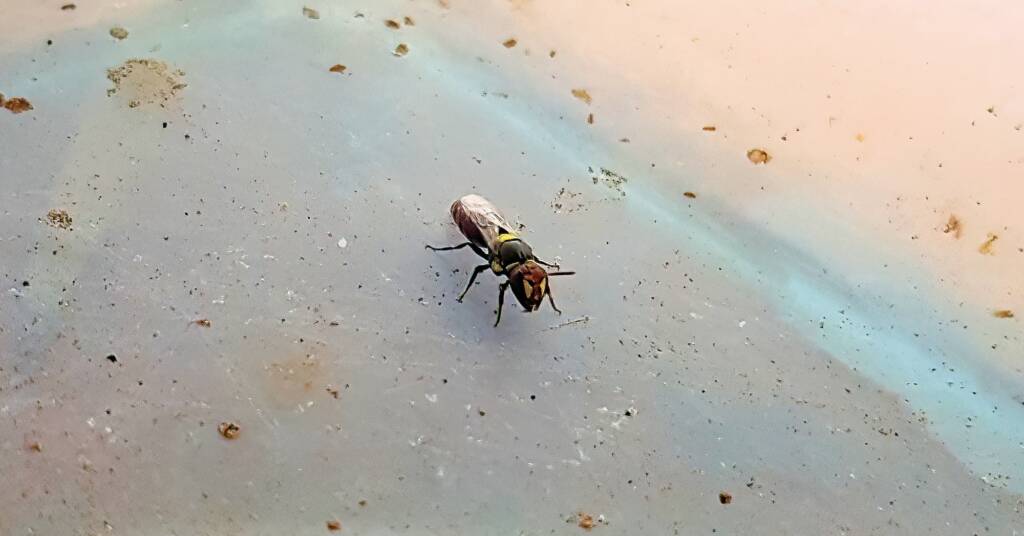
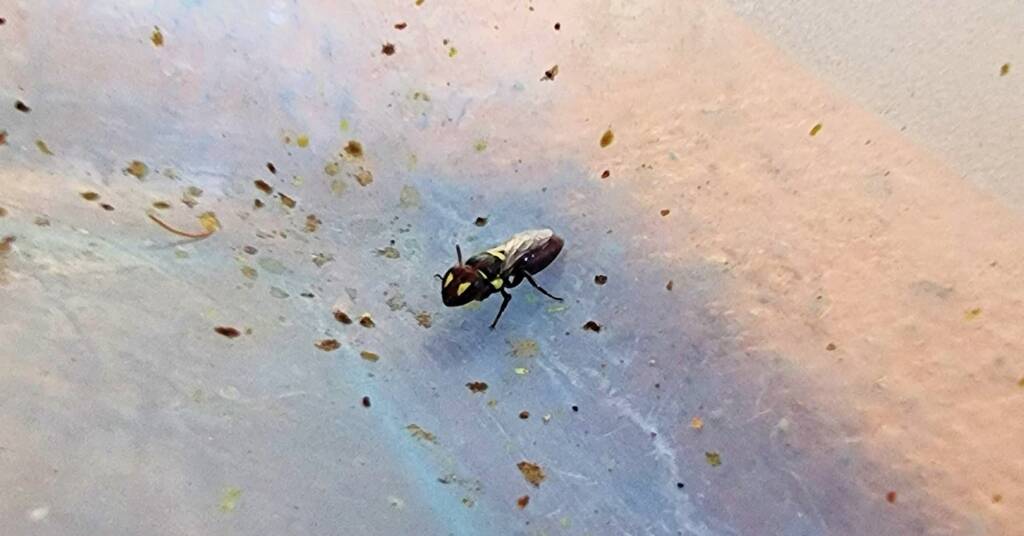
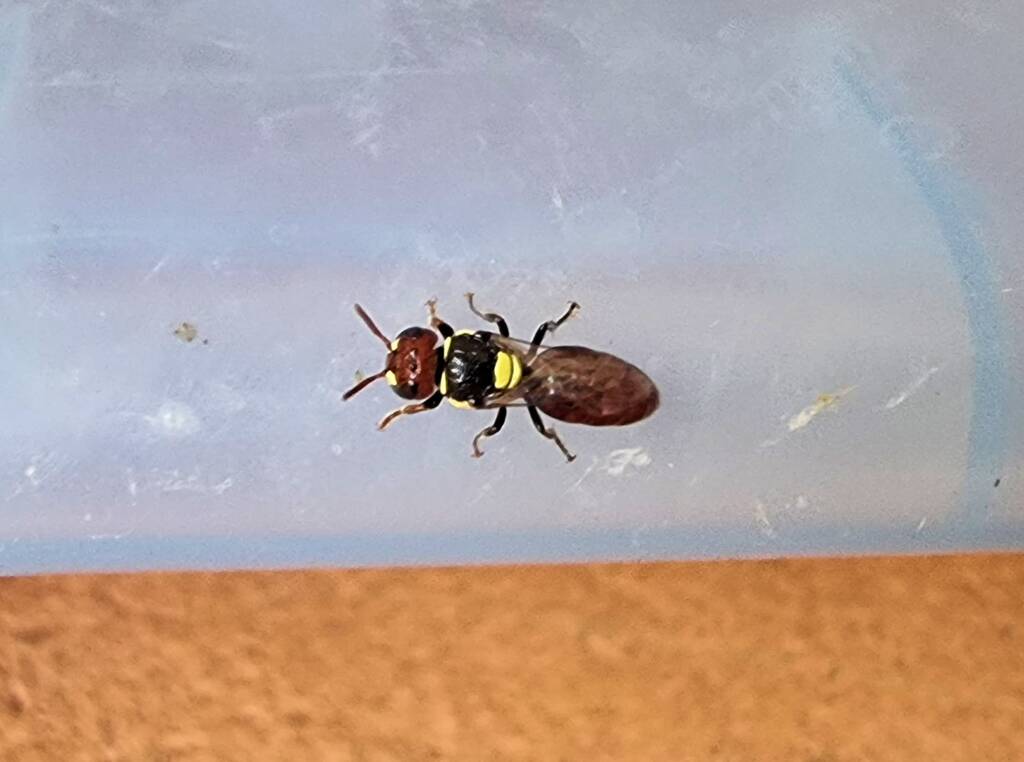
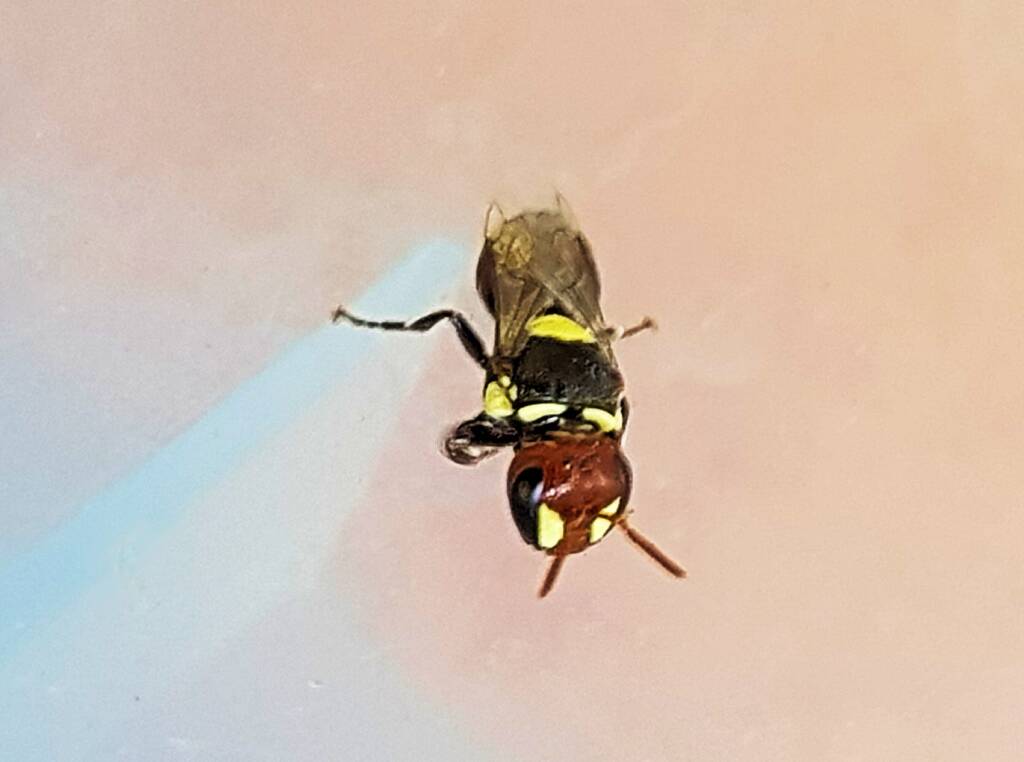

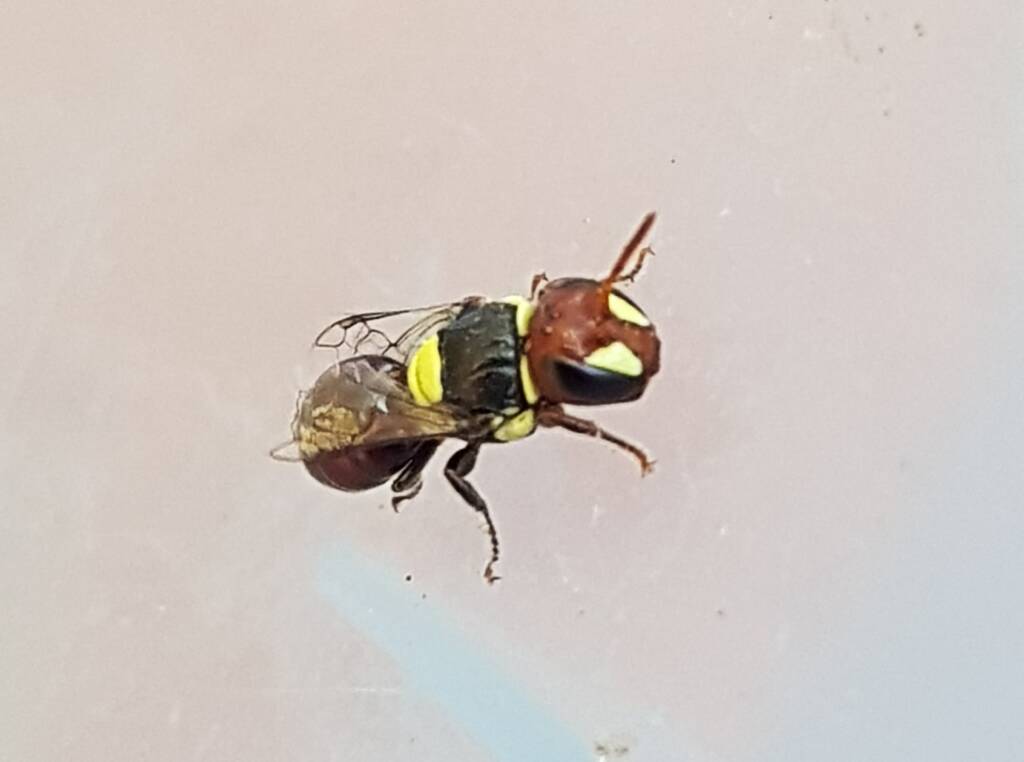
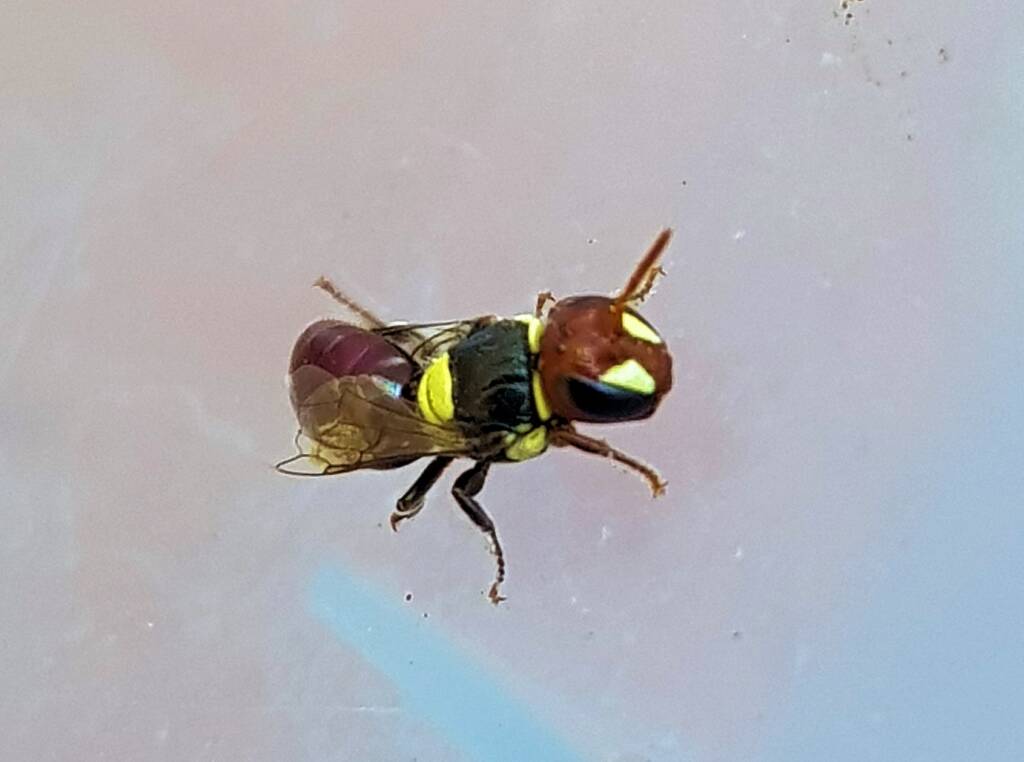
There are approximately 173 species of the genu Hylaeus found in Australia, with 14 out of the 16 sub-genera of Hylaeus endemic to Australia. Research suggests that the genus Hylaeus originated from Australia, around 30 million years ago.1
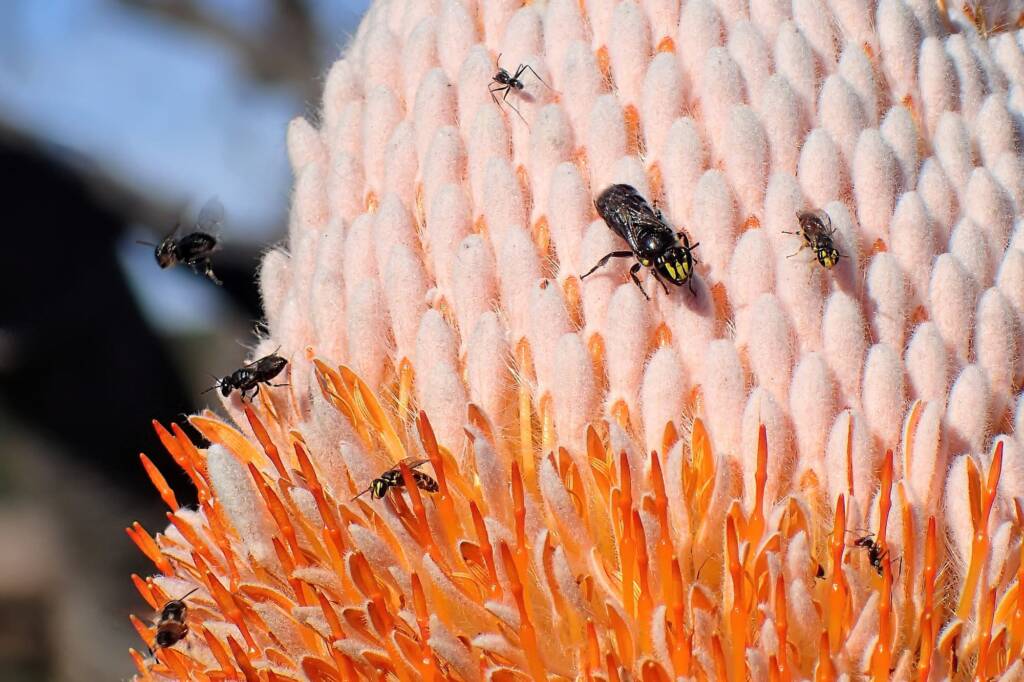
Some species of Hylaeus are only found feeding on flowers from specific genus, such as found on grevilleas and banksias.
This one landed on my leg for a couple of seconds.

At the time of writing this page (13 December 2021), Wikipedia had a list of 744 species in the genus Hylaeus (Masked bees). Of these 173 species of Hylaeus ae found in Australia, with 14 out of 16 of the subgenera of Hylaeus endemic to Australia.
The following is thought to be the Red-headed Masked Bee (Hylaeus ruficeps, Subgenus Euprosopoides).

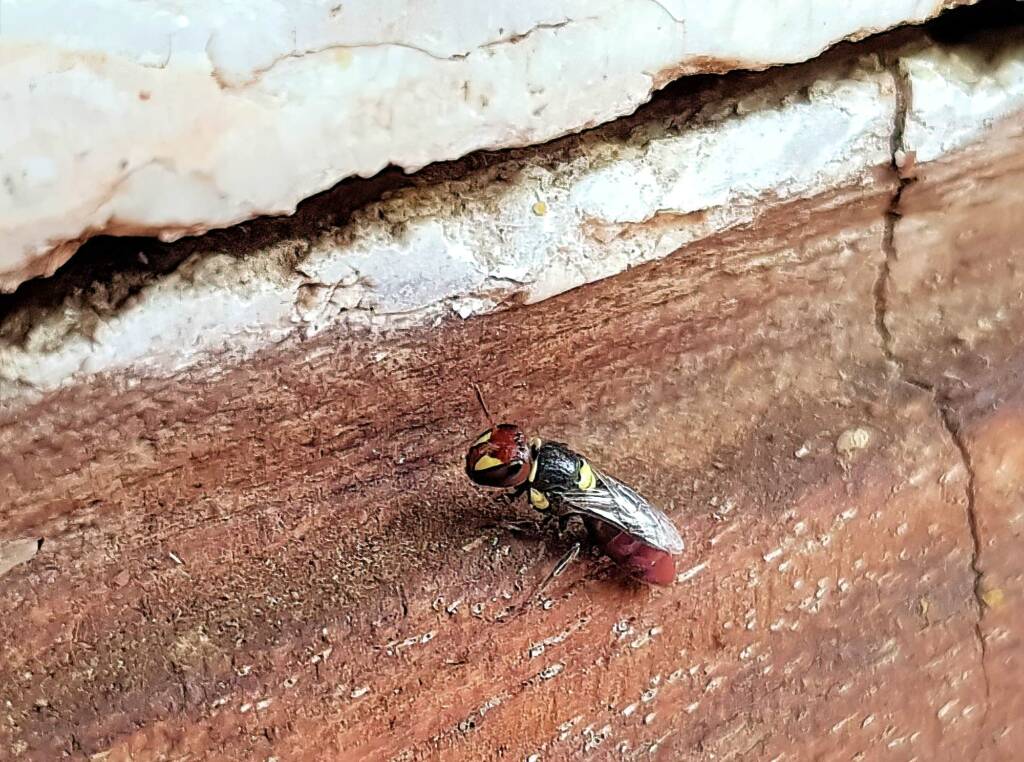
- Scientific classification
- Kingdom: Animalia
- Phylum: Arthropoda
- Subphylum: Hexapoda
- Class: Insecta
- Informal: Pterygotes
- Order: Hymenoptera
- Superfamily: Apoidea
- Informal: Apiformes
- Family: Colletidae
- Subfamily: Hylaeinae
- Genus: Hylaeus
- Subgenus:
- Hylaeus (Analastoroides) Rayment, 1950
- Hylaeus (Edriohylaeus) Michener, 1965
- Hylaeus (Euprosopellus) Michener, 1965
- Hylaeus (Euprosopis) Perkins, 1912
- Hylaeus (Euprosopoides) Michener, 1965
- Hylaeus (Gephyrohylaeus) Michener, 1965
- Hylaeus (Gnathoprosopis) Perkins, 1912
- Hylaeus (Gnathoprosopoides) Michener, 1965
- Hylaeus (Heterapoides) Sandhouse, 1943
- Hylaeus (Hylaeorhiza) Michener, 1965
- Hylaeus (Hylaeteron) Michener, 1965
- Hylaeus (Laccohylaeus) Houston, 1981
- Hylaeus (Macrohylaeus) Michener, 1965
- Hylaeus (Meghylaeus) Cockerell, 1929
- Hylaeus (Planihylaeus) Houston, 1981
- Hylaeus (Prosopisteron) Cockerell, 1906
- Hylaeus (Pseudhylaeus) Cockerell, 1929
- Hylaeus (Rhodohylaeus) Michener, 1965
- Hylaeus (Sphaerhylaeus) Cockerell, 1929
- Hylaeus (Xenohylaeus) Michener, 1965
- Hylaeus subg. Prosopisteron
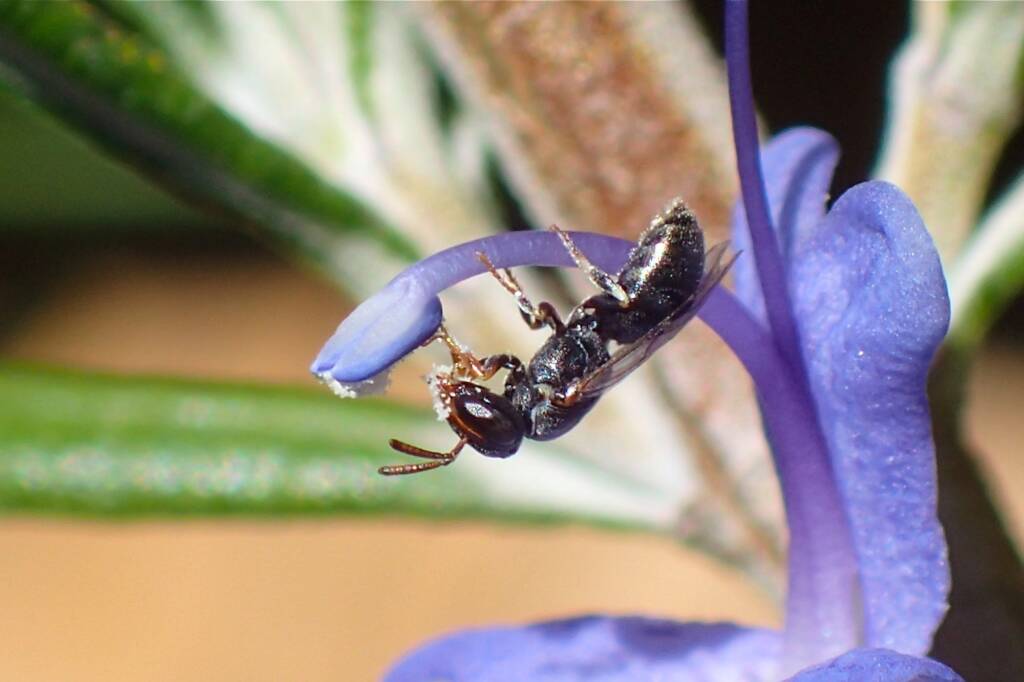
Footnote & References
- Hylaeus (bee), https://en.wikipedia.org/wiki/Hylaeus_(bee) (last visited Nov. 16, 2021)
- List of Hylaeus species, https://en.wikipedia.org/wiki/List_of_Hylaeus_species (last visited Dec. 12, 2021)
- Hylaeus Fabricius, 1793, Classification, Atlas of Living Australia, https://bie.ala.org.au/species/urn:lsid:biodiversity.org.au:afd.taxon:cddef0f3-8e98-4928-9d45-255506b8d7d3#classification
- The Diversification, Biogeography, and Body Size Evolution of Australian Hylaeine and Euryglossine Bees, by Kayaalp, Pelin, Flinders University, Trove National Library of Australia, https://trove.nla.gov.au/work/234595136
- About bees, Bee morphology, Exotic Bee ID, https://idtools.org/id/bees/exotic/bees_morph.php
- Hylaeus ruficeps ssp. ruficeps, iNaturalistAU, https://inaturalist.ala.org.au/taxa/892280-Hylaeus-ruficeps-ruficeps
- Hylaeus sp. (genus), A masked bee at Canberra, ACT, Canberra Nature Map, https://canberra.naturemapr.org/sightings/4201057
Hylaeus spp – Masked BeeHylaeus (Prosopisteron) Hylaeus albonitens Hylaeus alcyoneus Hylaeus constrictiformis Hylaeus douglasi Hylaeus elegans Hylaeus euxanthus Hylaeus maiellus Hylaeus nubilosus Hylaeus nubilosus Mud nest Hylaeus nubilosus Yellow Mask / White Mask Hylaeus proximus Hylaeus ruficeps Hylaeus (Euprosopoides) ruficeps ruficeps Hylaeus theodorei Hylaeus violaceus Hylaeus vittatifrons
BeesBees Anatomy Bee Behaviour Blogging Bees… Bees – image index Amegilla Bee Apis mellifera Austroplebeia australis Austrothurgus Braunsapis sp Ceylalictus perditellus Colletidae Euryglossinae Exoneura Homalictus Hyleoides bivulnerata Lasioglossum Lasioglossum (Chilalictus) Lipotriches Megachile Meroglossa Stenotritidae Tetragonula Thyreus Xylocopa

